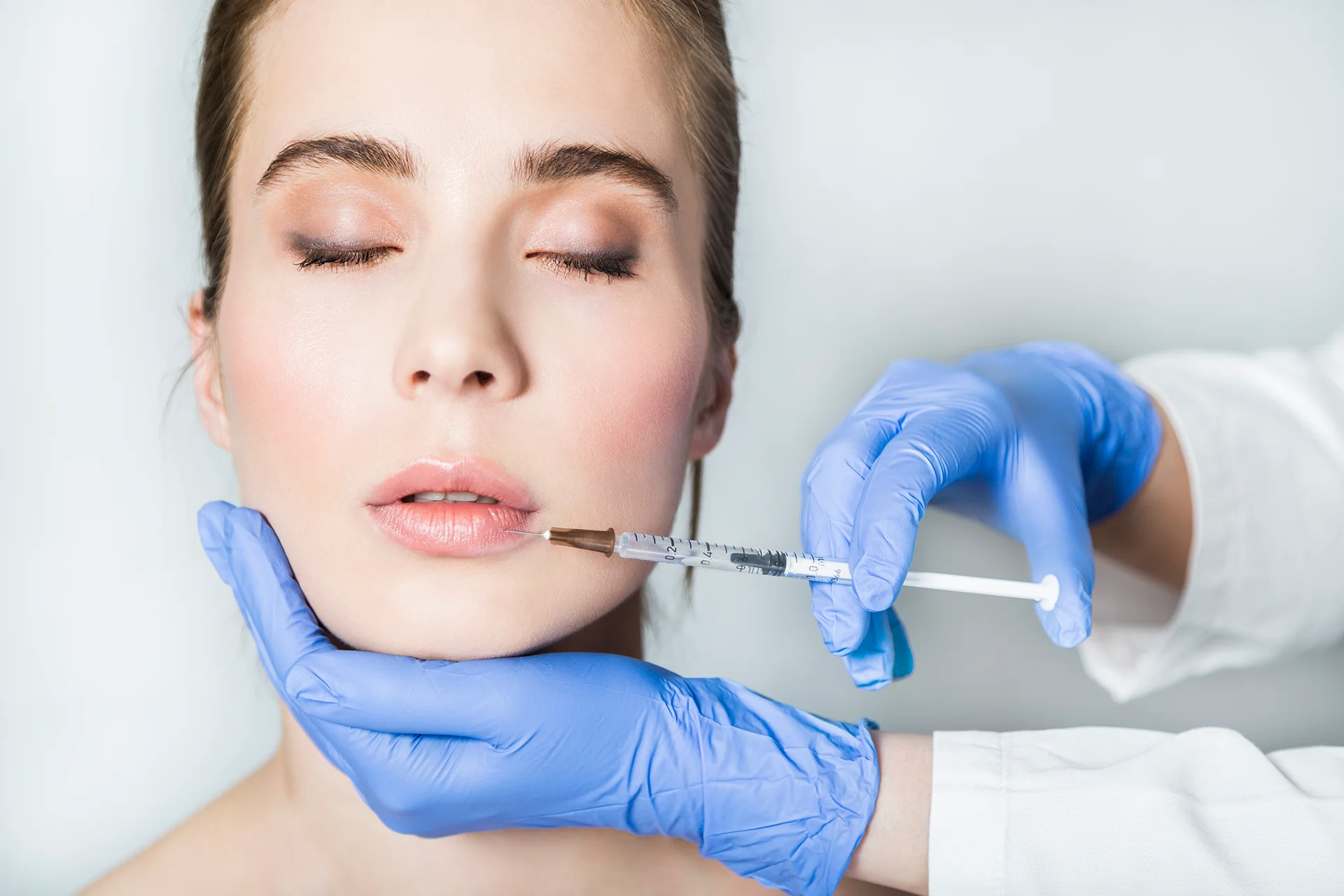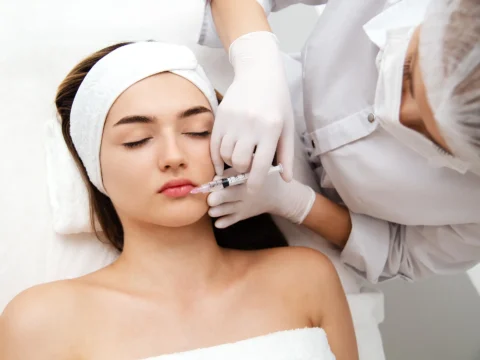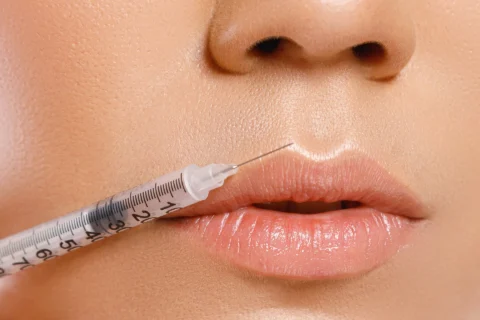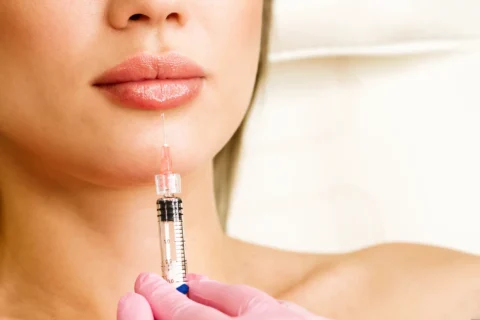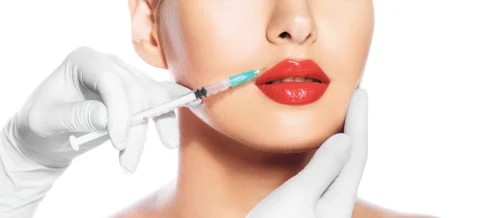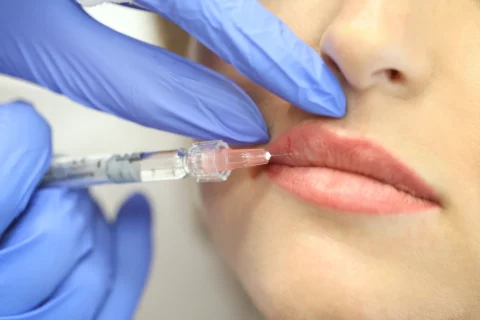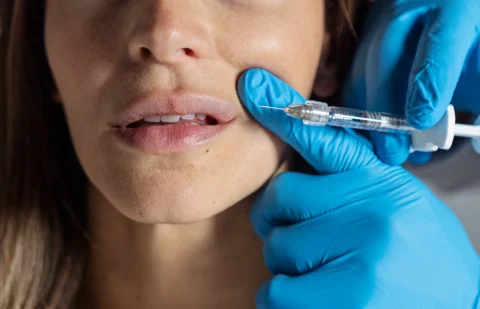You’ll Want to Know What Really Happens After – We Reveal All the Details Here
Dreaming of fuller, plumper lips? Lip fillers can turn your pout from drab to fab, but the process isn’t always glamorous. From swollen sausage lips to potential bruising, bumps, and unevenness, it’s normal to worry about the road to recovery. But don’t panic!
With expert guidance, temporary side effects smooth out over days and weeks. Wondering what to expect from your lip filler experience and results timeline?
Ethos Spa will walk you hour-by-hour and day-by-day through the lip filler journey – from what to do post-injections to when you’ll see your dream pout.
Get Camera-Ready With a Lip Refresh – Inquire About Our Lip Augmentation Services
What to Expect After Lip Injections?
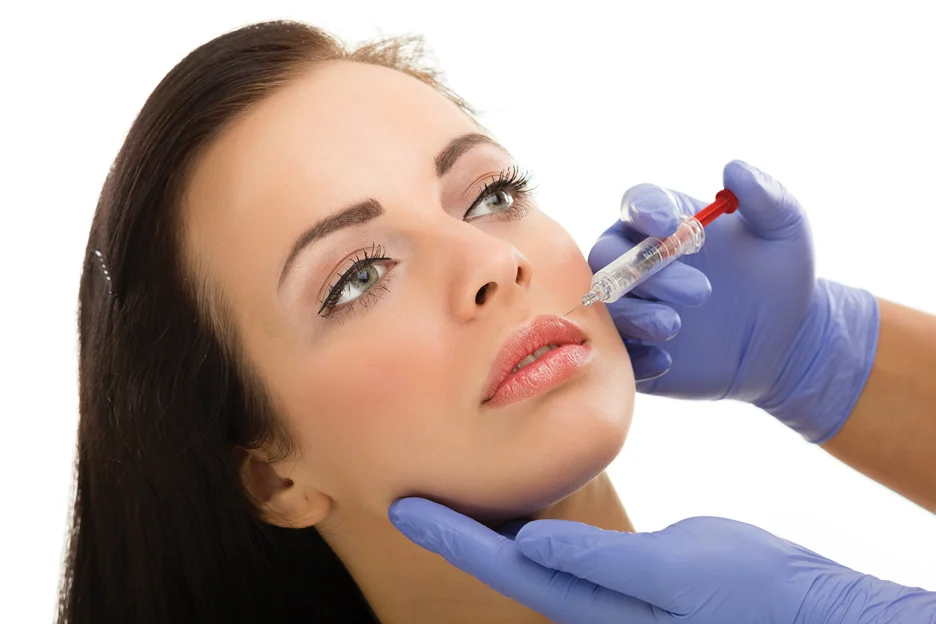
Right after getting lip injections expect your lips to appear significantly bigger and fuller than the final result. This initial pronounced swelling and fullness is normal and anticipated. The inflammation is caused by the trauma from the needle and your body’s response to the filler.
You can expect the swelling to last around 24-48 hours post-appointment based on our clients’ experience.
It’s also common to have some tenderness, redness, and bruising around the injection sites. Your provider will ice the area during and after the procedure to minimize swelling and bruising.
You may continue icing at home as needed for comfort. Any discomfort or pain should resolve within 1-2 days.
Recovery Timeline:
Days 1-3:
- Most swelling, tenderness, redness, and potential bruising
- Continue icing and taking oral pain medication
- Avoid strenuous exercise for 48 hours
- Swelling may cause uneven or asymmetrical lips initially
Days 4-7:
- Swelling and bruising start improving
- Lips appear more even and balanced
- Subtle shape and definition changes visible as swelling resolves
Week 2:
- Residual swelling and bruising are fully resolved
- Final lip shape, contour, and volume enhancement visible
- Provider can determine if touch-ups needed
Week 4:
- Filler fully integrated into the tissue
- Soft, natural-looking lips result
- Some size/fullness fluctuations are still possible
What to Expect 24 Hours After Getting Lip Fillers?
Swelling and bruising will likely peak at 24 hours then gradually improve over the next few days. Your lips may seem puffy and asymmetrical at first.
- Lips often feel firm and numb temporarily before the filler integrates. As it settles, lips will soften. Manage discomfort with medication, rest, and ice.
- Bruising typically gets darker initially before fading. Keep lips moisturized but avoid makeup for now.
- Discomfort usually decreases after the first 24 hours based on our experience.
Dr. Soni advises cool compresses, head elevation, very gentle massage, hydration, and medication all help reduce swelling and discomfort during the healing process. Limit putting pressure on the lips.
What to Do Right After Getting Lip Fillers?
According to our experience, the time right after your lip filler treatment is crucial for ensuring proper healing and optimal results. Here are some tips on what to do in the first few hours after your lip augmentation:
- Apply an ice pack wrapped in a towel to the lips for 10-15 minutes every few hours to reduce swelling and bruising. Do not apply ice directly to bare skin.
The cold temperature constricts blood vessels which helps minimize inflammation and discoloration.
- Sleep elevated on 2-3 pillows to minimize overnight swelling. Avoid sleeping on your face or stomach which puts direct pressure on the treated area. Lying on your back with your head propped up leads to less pooling of fluids in the lips.
- Take over-the-counter pain medication like acetaminophen if needed to manage discomfort. It is common to experience tenderness or throbbing as the anesthesia wears off.
An anti-inflammatory like ibuprofen is not recommended as it can increase bleeding and bruising. - Avoid strenuous exercise for 24-48 hours which could increase blood flow to the lips. However, light walking is okay and even encouraged to prevent blood clots. Just refrain from any vigorous cardio, weightlifting, or athletics which can worsen swelling.
- Eat soft, cool foods like yogurt, applesauce, soup, or pudding that require little chewing. This puts less strain on the tender lips. Hot foods can also irritate.
- Stay hydrated by drinking plenty of cool water and avoid using straws that require suction. Straws can put unwanted pressure on the sensitive treated area. Take small sips and gently swallow to keep the lips moisturized.
- Avoid spicy, salty, hot, acidic, or alcoholic foods and drinks that can irritate the lips and dehydrate the body. Seasonings, citrus fruits, coffee, and alcohol promote inflammation so it’s best to avoid them temporarily.
- Keep lips moisturized with a gentle, fragrance-free lip balm. However, avoid thick ointments, petroleum gels, gloss, or heavy products that can migrate into the filler area. A simple, moisturizing balm will suffice. Reapply as often as needed.
- Avoid makeup, lip tinting, waxing, or other lip treatments for at least 24 hours. Let the lips fully heal before applying any products. Lip plumping devices are also not recommended for 2 weeks post-treatment as they can displace the filler material.
Can I Drink Water After Getting Lip Fillers?
Yes, Dr. Soni often advises patients to drink plenty of cool water after getting lip fillers. However, avoid drinking with straws which can put unwanted pressure on the tender lips. Suction from straws can worsen swelling and cause discomfort in the delicate treated area.
Instead, sip water slowly without pursing or puckering your lips. Also avoid extremely cold water, as dramatic temperature changes can irritate.
Lastly, avoid alcohol for at least 24 hours as it can thin the blood, worsen swelling, and prolong healing.
Why is Exercise Not Recommended After Lip Fillers?
Exercise is not recommended after lip fillers because strenuous workouts flex facial muscles and increase blood circulation which can worsen swelling, bruising, inflammation, and irritation after lip fillers, as proven by this study titled “Physiological Responses to Exercise in the Heat”.
Here’s why exercise should be avoided temporarily:
- Any strenuous exercise increases blood flow and pressure which worsens swelling and bruising on the sensitive treated area.
- Even light exercise like walking raises body temperature and causes sweating which introduce bacteria while lips are delicate.
- Exercise requires drinking extra fluids but, again steer clear of straws as you do so.
Is it Normal to Have Pain After Lip Fillers?
It is normal to experience pain, swelling, redness, and bruising after lip filler injections. Here’s what to expect:
- Discomfort typically peaks at 24-48 hours but can last up to 1 week as the inflammation runs its course.
- Use over-the-counter pain medication like acetaminophen as needed for relief. Ibuprofen is not recommended as it slows clotting.
- Swelling should gradually improve with time but bruising may worsen before it gets better.
Is it Normal to Feel Sick After Getting Lip Fillers?
According to our experience, some temporary side effects are common after lip filler injections.
Common Normal Side Effects
- Swelling, bruising, numbness, and tenderness around the lips are very common and normal after lip fillers, according to our experience.
- Swelling peaks at around 2 days and usually resolves within 5-7 days.
- Numbness around the lips can occur from numbing agents used during the procedure and usually subsides within a few hours.
- Those prone to cold sores may notice flare-ups.
- Mild headaches, nausea, and flu-like symptoms often happen in the first 24-48 hours due to the trauma of injections and anesthetics used.
Rare and Serious Side Effects
- Infection at injection sites is unlikely but possible if proper sterilization is not followed.
- Lumps or nodules can occasionally form from improper injection technique or filler material.
- Vascular occlusion is very rare but can occur if filler is accidentally injected into a blood vessel. This can lead to vision loss, stroke, and tissue death.
- Allergic reactions to filler ingredients or numbing agents may happen in those with allergies.
What Happens When Lip Fillers Wear Off?
With time, the effects of lip filler decrease, and lips return to their original state.
- Lip volume and fullness from the filler will gradually diminish over a period of 4-6 months on average. Results do not last permanently.
- As the filler is slowly absorbed by the body, lips will revert to their original shape and structure before the injections.
- Schedule follow-up appointments every 6-12 months if you wish to maintain plump lips long-term. This involves injecting more filler as previous amounts dissipate.
- Consistent touch-up injections can replenish volume as it decreases over time. Your provider will advise on timing. However, patients often notice some settling around the 6-month mark.
What to Do If My Lip Filler Migrates?
If you notice your lip filler shifting out of place or migrating, contact your provider right away. Here is what you can do:
- Let your injector know immediately if the filler seems to be moving from the intended injection sites, as this requires prompt attention.
- Hyaluronidase enzymes can be injected to dissolve filler that has migrated. This quickly corrects irregular placement.
- Avoid massaging, squeezing, or putting pressure on the lips which can displace filler material during the initial healing period when soft. Later gentle massage may help break up uneven areas.
What is lip filler migration?
Lip filler migration happens when the injected material shifts away from the original injection sites over time. This can create uneven, lumpy, or unnatural lip contours. Signs you may notice include:
- Puffiness or swelling above the upper lip border
- Loss of definition between the lip line and surrounding skin
- Visible lumps or bumps on or around the lips
- Asymmetry between upper and lower lips
- Changes in lip shape or texture
Causes of Migration
- Overfilled lips during initial injection, in our experience
- Poor technique, as Dr. Soni continually cautions
- Excessive movement or massage after the procedure
- Use of lightweight filler unsuitable for lips
What to Do About Lip Filler Migration
- Mild migration may improve on its own over 6+ months as filler dissipates as per Dr. Soni’s advice
- Gently massaging affected areas may help redistribute migrated filler
The most effective treatment is dissolving filler with hyaluronidase injections, according to our experience. Avoid over-treating – more filler may worsen migration issues.
How to Prevent Migration
- Choose an experienced, reputable injector like Dr. Soni and research thoroughly
- Start with a conservative amount of filler and increase it gradually
- Carefully follow post-procedure instructions on massaging
- Avoid activities overworking lips like excessive talking or kissing
- Maintain follow-ups to monitor results over time
Are Your Lips Longing for a Little Lift? – Contact Ethos for Fuller, Sexier Lips
What Happens When Lip Filler Goes Wrong?
Serious complications from lip fillers are uncommon but can occur in rare cases. Seek prompt medical care if you have signs of blocked blood vessels like extreme pain, discoloration, or numbness.
Though rare, vascular occlusion can lead to tissue damage if not treated quickly, Dr. Soni cautions. Other uncommon but serious risks include infection, allergic reaction, nodules, and filler migration.
Redness and severe throbbing pain may signal impending necrosis and require urgent attention. Vision issues could arise from the occlusion of vessels supplying the eyes.
Poor technique can sometimes create bumps, asymmetry, or irregular results. Dr. Soni advises there are often ways to correct imperfections through additional filler or hyaluronidase enzyme injection.
Overcorrection and repeated injections may increase complication risks.
Treatment options for complications include:
- Hyaluronidase to dissolve hyaluronic acid filler and restore blood flow
- Steroids to reduce inflammation
- Antibiotics for infection
- Surgery or laser to remove problematic filler
- Warm compresses and massage for some occlusion cases
Fuller Lips are Just a Call Away!
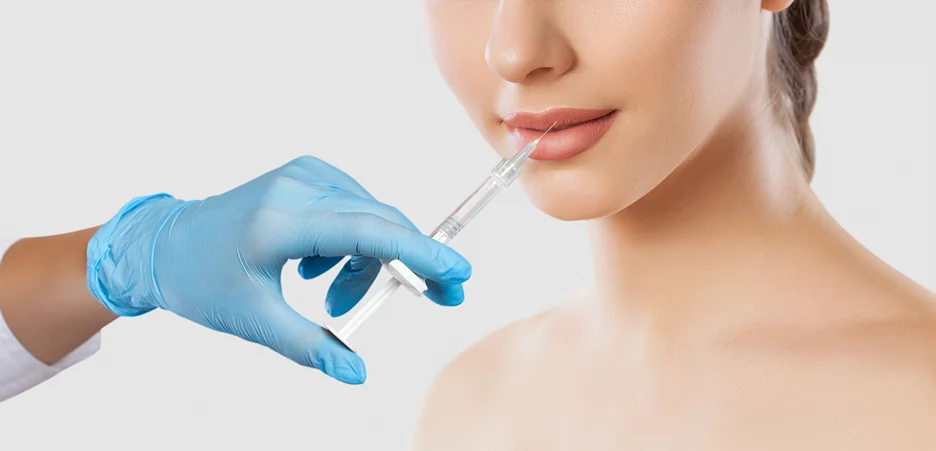
Contact Ethos Spa today to book your lip filler consultation with Dr. Soni. With his artistic eye and expert technique, he’ll have you flaunting a fuller, more defined lip contour in no time.
What are you waiting for? Let’s get those lips ready for their close-up!

